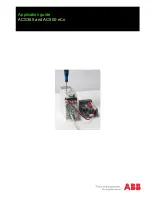
6
Installation
6.1
Quick Start
N.B. Never power on an FM transmitter without a suitable antenna or dummy load connected.
The V2 Transmitter’s protection circuitry will prevent any internal damage, but it is not advis-
able to run an FM transmitter without a load connected.
Setting up a V2 Transmitter couldn’t be any easier. First connect either analogue audio to
the left and right back panel connectors (10 and 11), digital audio AES/EBU into the left hand
connector (10) or feed the MPX input (13) from an audio processor. Connect the RF output
(18) to a 50Ohm antenna of the correct power handling capability. Connect the required
remote control / monitoring ports (Ethernet, RS232, Alarms/Triggers Port).
The transmitter’s frequency and power are both set from the RF Settings menu:
Input selection, pre-emphasis, processing and the stereo parameters are set in the audio set-
tings menu:
Input
Selects analog or digital input to the transmitter’s built in stereo encoder/audio proces-
sor. For analog, connect to left and right XLR Inputs. For digital, connect an AES/EBU connec-
tion to the left hand XLR input.
Pre emphasis
Sets pre emphasis to off, 50µS (Europe/Japan) or 75µs (Americas).
Processing Preset
Selects the processing preset on the integrated 4-band DSPX audio proces-
sor.
25
Summary of Contents for TX V2
Page 7: ...10 2 5 TX600 V2 86 10 2 6 TX1000 V2 87 10 2 7 TX1500 V2 87 10 2 8 TX2500 V2 88 7...
Page 8: ...Part I Introduction 8...
Page 16: ...4 Front and Rear Panels 4 1 1U TX5 TX30 TX50 16...
Page 17: ...4 2 2U TX300 TX600 17...
Page 18: ...4 3 2U TX1000 TX1500 18...
Page 19: ...4 4 3U TX2500 19...
Page 24: ...Part II Initial Setup and connections 24...
Page 31: ...Part III System Configuration 31...
Page 78: ...Part IV Troubleshooting 78...
















































